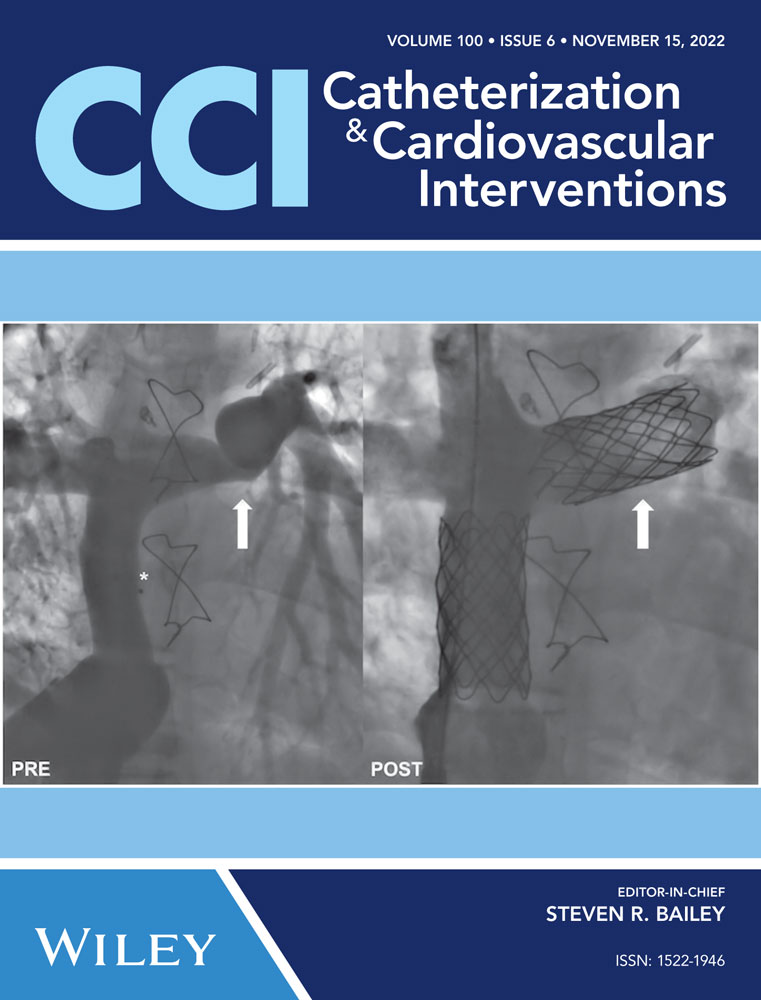Trends in invasive treatment of patients hospitalized with aortic stenosis complicated by cardiogenic shock
Abstract
Background
Before the development of transcatheter aortic valve replacement (TAVR), balloon aortic valvuloplasty (BAV) was the only potential nonsurgical intervention for patients with aortic stenosis complicated by cardiogenic shock. Emergent TAVR is now an option and has shown acceptable outcomes compared with elective TAVR. We explored how treatment patterns for aortic stenosis and cardiogenic shock among patients received invasive intervention have shifted since TAVR was introduced.
Methods
We used the Nationwide In patients Sample to identify nonelective hospitalizations for patient with aortic stenosis complicated by cardiogenic shock who received invasive treatment (TAVR, BAV, or surgical aortic valve replacement [SAVR]). We explored the proportion treated with each treatment modality over time, the patient characteristics and in-hospital mortality associated with each treatment, and used multivariable logistic regression to examine whether changes in in-hospital mortality over time differed by treatment.
Results
Between 2010 and 2019, we identified 9899 hospitalizations for decompensated aortic stenosis with cardiogenic shock during which patients received invasive treatment (TAVR 17.7%, BAV 20.2%, SAVR 62.1%). Use of both TAVR and BAV has increased over time compared with SAVR (TAVR 6.6% ≥ 33.8%, BAV 8.4% ≥ 23.2%, SAVR 91.6% ≥ 43.0%; p < 0.001 for trend). The overall in-hospital mortality rate was 21.0%, which decreased over time for all treatments (TAVR 20.0% ≥ 18.8%, BAV 66.0% ≥ 25.5%, SAVR 17.7% ≥ 11.8%; linear trend p < 0.001 for each), with lower mortality for TAVR versus BAV at all time points. Patients treated with TAVR (vs. BAV) were less likely to require mechanical ventilation (36.8% vs. 46.3%, p < 0.001) or mechanical circulatory support (22.5% vs. 29.9%, p < 0.001). In the multivariable analysis, the interaction between treatment and time was not significant (p = 0.245), indicating the reduction in in-hospital mortality over time did not differ among the treatments.
Conclusions
Since the introduction of TAVR, there has been a shift toward increased use of nonsurgical invasive treatments (both BAV and TAVR) for aortic stenosis and cardiogenic shock. Although in-hospital mortality has declined, it remains high in all groups, but particularly among patients treated with BAV, where the severity of cardiogenic shock appears to be higher than in those treated with other modalities.
CONFLICT OF INTEREST
D. J. C.: research grant support from Edwards Lifesciences, Medtronic, Boston Scientific, and Abbott; consulting fees from Edwards Lifesciences, Medtronic, Boston Scientific, and Abbott. The remaining authors declare no conflict of interest.
Open Research
DATA AVAILABILITY STATEMENT
The Nationwide Inpatient Sample (NIS) is the largest publicly available all-payer discharge database.




